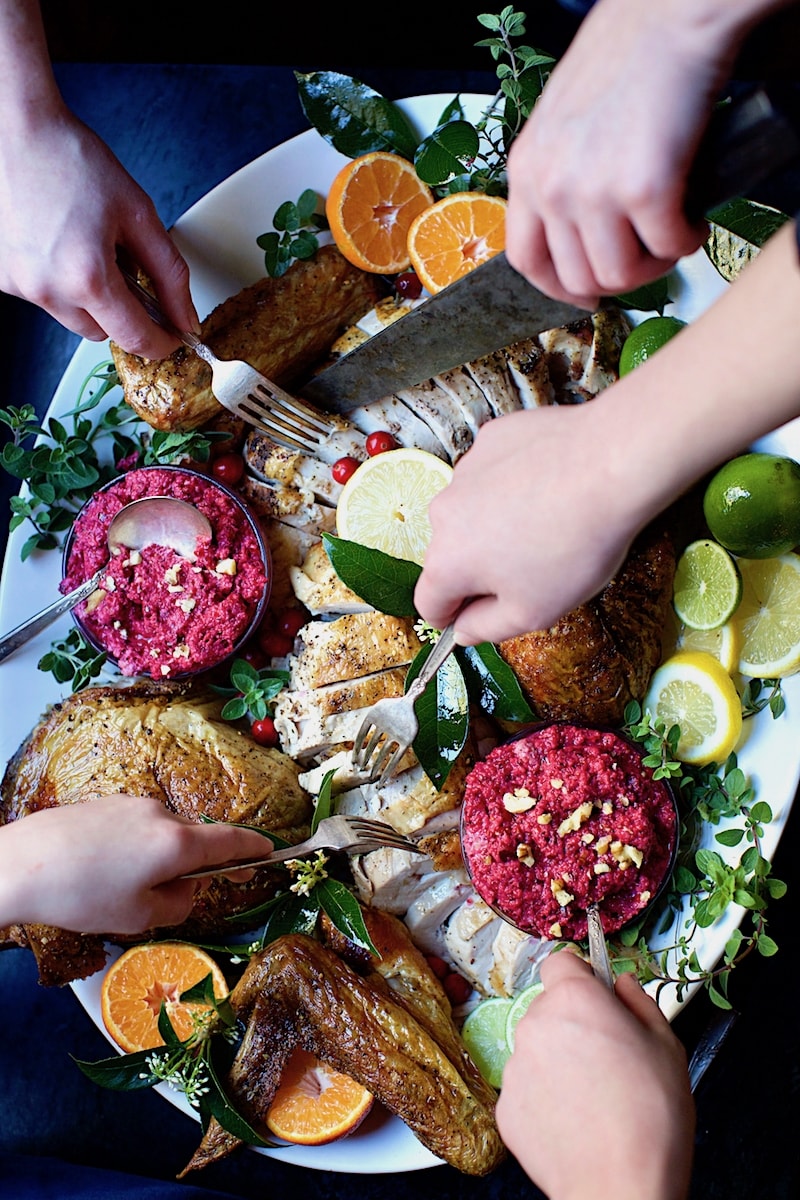Ah, the age-old question that plagues every Thanksgiving chef: to spatchcock or not to spatchcock? When it comes to brining a turkey, the answer depends on your desired outcome and cooking method. Let’s dive into the juicy details and help you decide the best approach for your bird.
Spatchcocking: The Pros and Cons
Spatchcocking, also known as butterflying, involves removing the backbone of the turkey, resulting in a flatter bird that cooks faster and more evenly. This technique is especially beneficial for those who prefer crispy skin and juicy meat. However, it also comes with a few drawbacks:
Pros:
- Faster cooking time: Spatchcocking reduces cooking time by up to 50%, making it ideal for busy cooks or those with limited oven space.
- Crispy skin: The flatter surface allows for more even browning and crisping of the skin.
- Juicy meat: Spatchcocking helps the turkey cook more evenly, preventing dry breast meat.
Cons:
- More prep time: Removing the backbone requires additional effort and may not be suitable for beginner cooks.
- Presentation: Spatchcocked turkeys don’t have the traditional presentation of a whole roasted bird.
- Potential for drying out: If not careful, spatchcocked turkeys can dry out more quickly than whole birds.
Brining: The Key to a Flavorful Bird
Brining involves soaking the turkey in a salt-water solution, which helps to retain moisture and infuse flavor. This technique is particularly beneficial for larger birds or those cooked at high temperatures.
Benefits of brining:
- Moist meat: Brining helps to prevent the turkey from drying out during cooking.
- Enhanced flavor: The salt in the brine penetrates the meat, adding flavor and enhancing the natural juices.
- More forgiving cooking: Brining allows for some flexibility in cooking time and temperature.
The Verdict: Spatchcocking Before Brining
So, should you spatchcock a turkey before brining? The answer is yes, if you want a faster-cooking, crispy-skinned, and juicy bird. However, if you prefer a more traditional presentation or are worried about drying out the turkey, you can brine it whole and roast it as usual.
Here’s a quick guide to help you decide:
Spatchcock before brining:
- If you want a faster cooking time.
- If you prefer crispy skin.
- If you are comfortable with additional prep work.
Brine whole and roast as usual:
- If you prefer a traditional presentation.
- If you are concerned about drying out the turkey.
- If you are short on time for additional prep work.
No matter which method you choose, remember to follow safe food handling practices and cook the turkey to an internal temperature of 165°F. With a little planning and preparation, you’ll be sure to enjoy a delicious and juicy turkey for your Thanksgiving feast.
Wild vs. Domesticated Turkey
If you are cooking a wild turkey, you will want to make sure it has aged properly. I prefer dry aging my meat before it is frozen. During dry aging, the meat needs to be surrounded by a constant air temperature of 34-37 degrees. This denatures (breaks down) the meat.
A domesticated turkey from the grocery store, on the other hand, is ready to cook. You can thaw the meat as per the instructions and then begin with a brine.
You can brine your bird either before or after you spatchcock it, if that’s what you choose to do.
- I will spatchcock the turkey after brining if I wish to wet brine it.
- However, if I’m going to dry brine the turkey, I’ll spatchcock it before applying the dry rub.
Brining Meat is simple and results in a brilliant flavor!
Brine and Cook a Turkey with Ease—Really!
“If it were only that simple,” you might be saying right about now. Cooking a whole turkey, whether wild or domestic, can seem like a daunting task. But trust me, with just a few steps, you can have a perfect turkey on the table.
We all covet those beautiful turkeys we see people put on that festively decorated Thanksgiving or Christmas table. I can almost taste it: crispy skin with tender, flavorful meat. If you follow the instructions below for your preferred cooking method, you can consistently produce a perfectly cooked turkey.
In this article I give step-by-step instructions and tips for:
- Wet vs. dry brining and how to do each
- Spatchcocking the turkey for faster cooking
- Roasting a whole turkey
- Frying a turkey
- Smoking a turkey

Spatchcocked and Brined Turkey | Step by Step Tutorial
FAQ
Can you cut up a turkey before brining?
Does a turkey have to be completely submerged in brine?
Should you Spatchcock a turkey yes or no?
